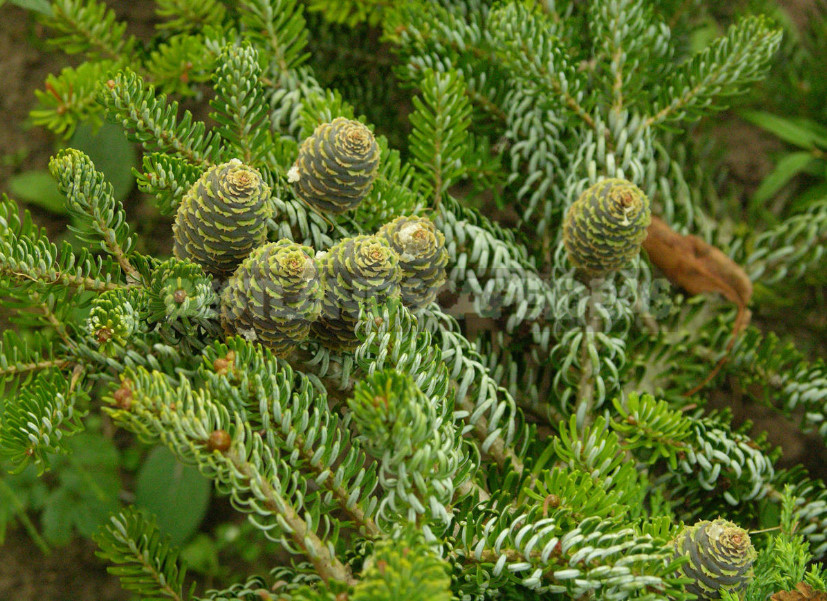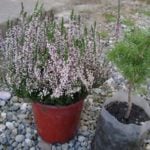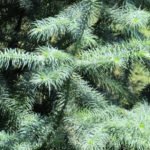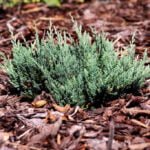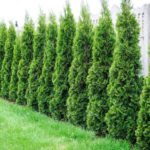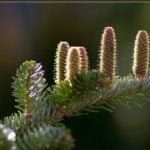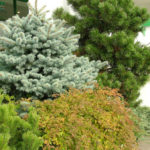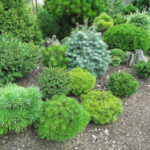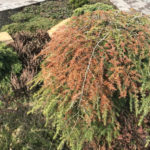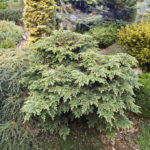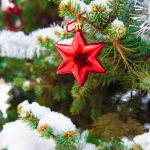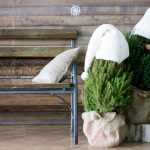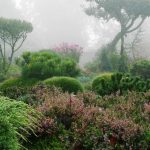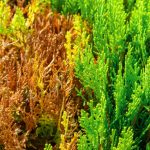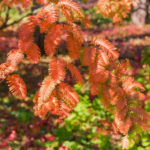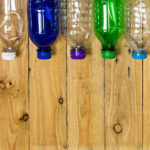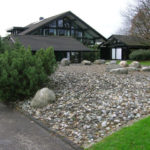Today came the turn of Eli’s closest relatives-Pseudotsuga and Abies-to be identified.
Trappings Of Pseudotsuga
The bark is brownish-gray, thick, with deep longitudinal cracks. Branch is directed horizontally and randomly on the ends hang, the crown is quite delicate. The leaves are relatively soft, flat, with a rounded end and two whitish oral strips below.
To distinguish Pseudotsuga from the Christmas tree, just look at the ground and see the bump. Hanging, like spruce, cones have a kind of arrangement: scales, which directly covers the seed (covering), long and protrudes Trident tongue from under the rounded woody (seed), which actually forms a lump.
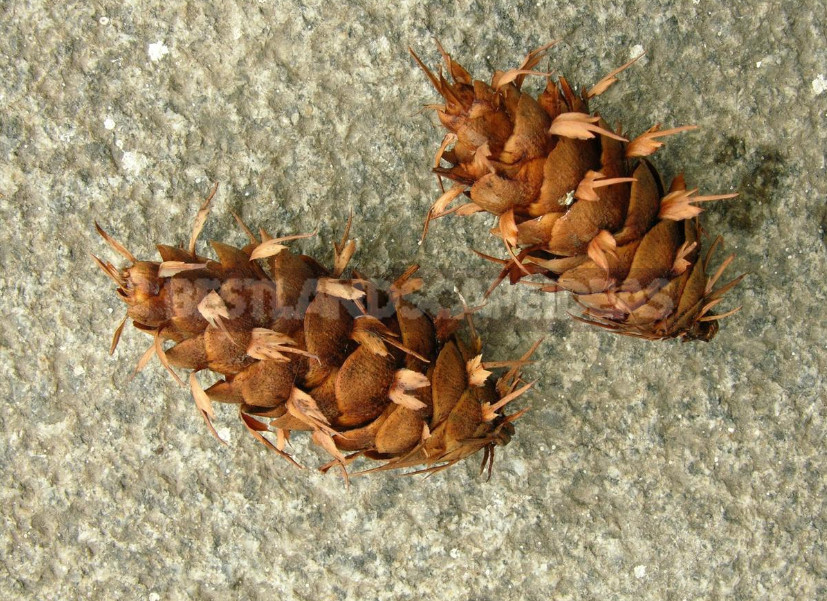
Types and varieties Pseudotsuga
With absolute probability will meet P. menziesii, aka P. douglasii. This is the most common of the North American species, which forms a huge forest on the West coast of Canada and the United States. It is adjoined both geographically and systematically by several other species — very similar and often combined with it. Among them there are both greenish and blue.
Among the latter-P. glauca. It is often seen simply as the blue form of P. douglasii, found in the Rocky mountains. The grades made from it are especially decorative:
- large ‘Blue Wonder’ has a well-defined color;
- ‘Compacta’ combines different clones into a cushion;
- the ‘Elegans’ emphasizes irregular branching, which gives it a special grace;
- in varieties ‘Fastigiata’ branches lifted up;
- in ‘Glauca Pendula’ – on the contrary, the branches hang down;
- widespread low (up to 2 m) ‘Fletcheri’ – shapeless, wide, with long thick branches;
- ‘Pannonia’ is a dwarf ‘slow’ shape.
Trappings Of Abies
The bark of most species is gray and smooth to Shine, which allows even at a distance to distinguish Abies from the Christmas tree. At close examination on the bark noticeable bumps, under which the resin is stored. The branches stick out sideways and are usually floors.
Needles are of two types. On vegetative shoots it is flat, wide, with a rounded or even notched end and two white stomatal strips from below; on pineal shoots – tetrahedral with strips on all sides.
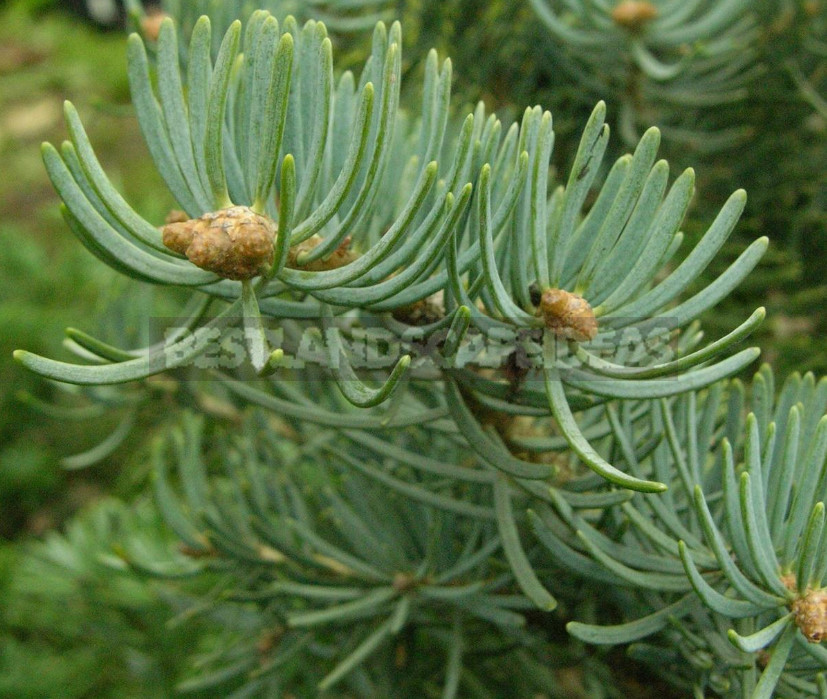
To see the lump Abies, it is useless to look at the ground where it will never detect. We should look upstairs. Abies cones stick out like thick candles. Small and sharp covert scales are visible from under the wide densely Packed seed. But the cone reaches the ground in a disassembled state: its rod remains sticking out, and the scales and winged seeds crumble around.
The types and varieties of Abies
Abies are generally very nice group of conifers, and many of them are blue. The most common (in culture) and reliable – A. concolor, found from Colorado to Mexico. Its long needles (4-6 cm) are solidly painted on the top and bottom, but are rather chaotic for usually neat Abies. But even though the weak nature of the attempt to run a comb through it, twisting slightly forward and upward. It has many varieties:
- especially strong blue, even silvery shade has needles grade ‘Violacea’, additionally decorated with purple cones; this is the silver among the Abies;
- good large variety – ‘Candicans’ (‘Argentea’);
- among the low varieties stands out ‘Compacta’ (‘Glauca Compacta’);
- narrow cones have ‘Conica’ and ‘Fastigiata’;
- hanging branches for ‘Blue Cloak’ and ‘Fagerhult’;
- as small shapeless witches brooms look ‘Masonic Broom’ and ‘Piggelmee’, etc.
Abies koreana lives in the mountains of South Korea. One of the cutest little Abies. Extremely accurate: shiny short (up to 2 cm) leaves, expanded and rounded at the end, thickly and evenly cover the branch; crown dense, smooth. As an accessory attached purple cones. True, its wild shape is dark green, but some varieties can be called silver — so diligently they Unscrew the needles, showing white oral strips: it’s ‘Silberlocke’, which can be propagated by seeds, and ‘Silver Show’.
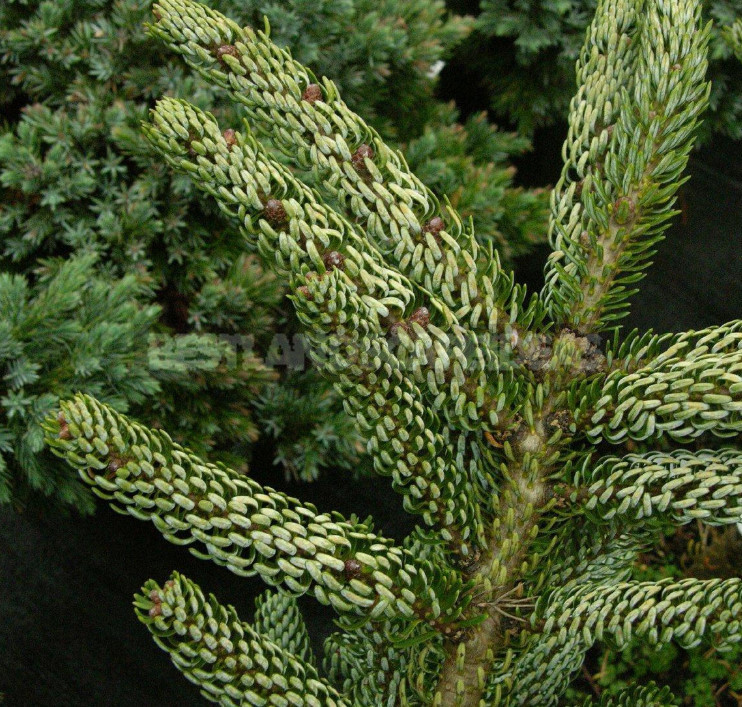
Abies lasiocarpa, which occupies the subalpine zone in the mountains in the West of North America, except for the light silver bark has, among other delights, a bluish tinge of rearing needles. This color is especially pronounced in varieties ‘Compacta’ – dwarf dense pyramid.
Reproduction by seeds
Is it possible to reproduce the blue “Christmas tree” somehow, except for cutting and grafting-ways not always available to the Amateur? If there is no radiculitis, in October you can gather up the scattered seeds of Abies. Fir Pseudotsuga cones and dried, the seeds shake out. They can germinate without stratification-in spring sowing,but the best germination after stratification 1-1.5 months. You can sow directly into the ground later in the fall or in the box at the end of winter and buried under the snow.
Seeds in many species are photosensitive, so much to fill them is not recommended. Germination is generally low, especially in Abies and Pseudotsuga (less than half of the seeds germinate). If blue forms were sown, then only part of the seedlings will be of the desired color, and in different instances it will be expressed in different degrees.
